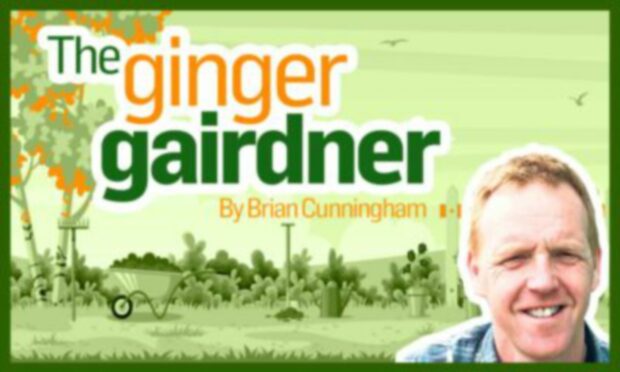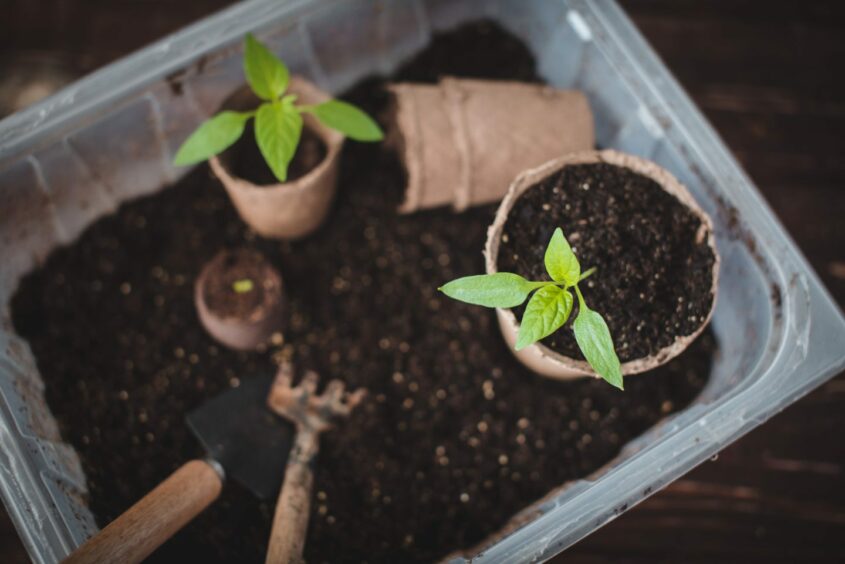The other week saw confirmation for our gardening cousins south of the border that sales of peat, a key ingredient in our bags of garden compost, will be banned from 2024.
The devolved governments such as our own in Scotland have yet to make their decisions, but I’d be surprised if we didn’t follow suit. Even if it’s not now it’s only going to be a matter of time.
Ban on peat
Although it’s been on the cards for a while, this is still big news for us gardeners having recently enjoyed having the option of still being able to choose between using a peat-based brand or getting ahead of the game and adapt to growing with a peat-free version.
To help you understand the importance of this moment, peat has been the staple component of our bought bags of composts since the 1960s. Up until then the growing medium used by gardeners was based around soil.
By the time I started my career in the early 1990s gardeners were well into the simple task, when needing compost, of only having to lift up a bag and empty it on to the potting bench.
A point often made by the senior gardeners who were training me; apparently I never had it so easy!
Quick and simple
To be fair they probably had a point. As much as I love the romance of the gardening world during the Victorian era, it takes seconds to do this compared to the more laborious process of making up a mix of soil compost, a system used for decades.
Loam – a mixture of sand, silt and clay- would be sieved then sterilised in a giant oven to clean it of weeds, pests and diseases before being placed on the potting shed floor and mixed by hand with peat and sand to make the potting compost.
This all had to be done before any potting up was carried out!
In the natural environment where peat is found it’s extremely challenging for plants to grow, with only a limited number enjoying the conditions this provides.
However, when used in the right situation peat can be advantageous, excellent for growing plants in, retaining moisture and being of a consistency that doesn’t compact, creating a compost that is light and airy.
Back then, using up this natural resource extracted from bleak and harsh wetland not much else would be done with, didn’t seem to be such an issue.
The lasting damage
Fast forward over half a century later and we are now much more aware of the damage this process is doing to the environment.
Thankfully today we have a much better understanding of the natural world around us.
There once was a time we used chemicals to sort out any pest or disease attacking our plants and food crops.
Yes, we could then buy the likes of immaculate cauliflowers, carrots, lettuces and apples without a blemish or insect bite in sight, but goodness knows what harm these concoctions, found as residue on the surface of our food crops, were doing to our bodies.
I suppose at the time this was revolutionary, making life so much easier, but these pesticides and insecticides were indiscriminate. They also hit the good guy predator insects we now know, if left in peace, can work with us home gardeners to keep these attackers at bay.
Us humans are just a part of a balanced ecosystem that involves every living thing on the planet. Just because peat areas may not seem much use to us, they are still very rich and diverse in flora and fauna.
Carbon dioxide and methane
The main reason for this ban is, when the peat ecosystems are being damaged for creating our compost bags, the carbon dioxide and methane stored within is released into the atmosphere, adding to the greenhouse gas levels and contributing to global warming.
I understand and respect the argument from fellow gardeners and the experts in the horticultural industry, asking to delay the ban or to be allowed to continue using it in propagation composts.
But for me it’s too important against the bigger picture of being more respectful to planet earth. We just need to get on with living without peat.
Am I worried?
Am I concerned there is a lack of materials to make alternative types of compost? That next year there may be a shortage of compost bags available in garden centres? That the price per bag will increase on top of everything else going on at the moment?
Yes I am but I won’t panic.
I’ve not forgotten the scramble for toilet rolls a couple of years ago during the first lockdown, but it wont make me head out and unnecessarily stock up on compost.
When you need it for seed sowing, always use fresh bagged compost. Otherwise make more of your own homemade compost from your own garden waste.
This can be mixed with soil or leaf mould to make your own potting compost,
You made need to give some extra liquid feeding but will be good enough to grow the like of young veg plants for a few weeks before planting out.




Conversation